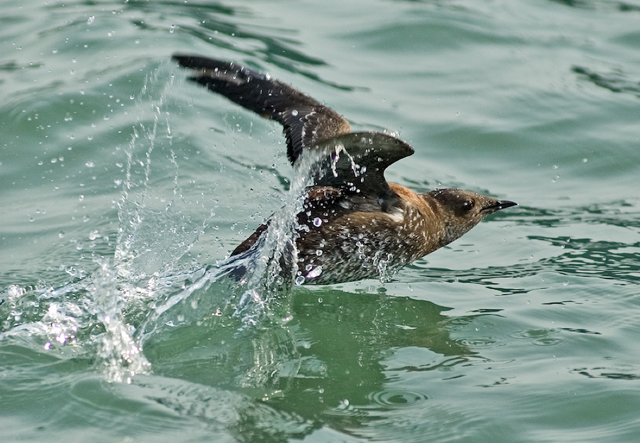by Maria M. Ruth – On December 3, the Washington Board of Natural Resources meeting brought to an uneasy conclusion the development of the state’s conservation strategy for the endangered Marbled Murrelet, a robin-sized seabird that nests in mature coniferous forests on the Pacific Coast. The five-hour-long meeting was “historic” given the twenty-two years that have passed since the “interim” conservation strategy for the murrelet on state forest lands was put into place.

Alternative H was approved in a 4-2 vote with Clallam County Commissioner Bill Peach and Jim Cahill (Governor Inslee’s appointee to the board) voting against because of impacts to counties and the need for more protective measures in the face of the climate crisis, respectively. Alternative H was not the alternative supported by Audubon or others in the conservation community as it does not provide enough conservation benefit for marbled murrelets. Nor was Alternative H supported by timber industry, trust beneficiaries, or timber-dependent counties as it does not generate enough revenue or jobs. Alternative H, according to the Department of Natural Resources (DNR) and U.S Fish & Wildlife Service who jointly developed this plan, meets the requirements of the Endangered Species Act and the DNR’s fiduciary responsibility to the trust beneficiaries. And, in striking this so-called “right balance” between conservation and revenue generation, the DNR has made no one happy. The Washington Environmental Council issued a statement declaring the final plan “shows lack of leadership, leaving unanswered questions for the future of both wildlife and rural communities.”
Indeed, Alternative H falls well short of the win-win stakeholders were hoping for but with DNR’s need to protect marbled murrelets and to harvest their nesting habitat, Alt H is meh-meh at best. The proof that Alt H will make a significant contribution toward murrelet recovery on state lands will be evident in the coming decades as the strategy gets played out on the ground—in the forest lands where murrelets nest. At their current rate of decline—4% per year—a recovery or even slowing of this precipitous decline is unlikely.
Perhaps we can consider the silver lining of this cloud this impassioned 3-minute speech by Chris Reykdal, BNR member and our state’s Superintendent of Public Instruction. “The $80-90 million that K-12 gets in school construction—we need to phase off that in time,” Reykdal said. “This money has to go to counties. It has to go to the industries that are impacted by these decisions and ultimately to species preservation and habitat preservation.” Indeed, de-linking the $3 billion school construction costs from timber harvest is long overdue. It would be a real victory if Reykdal could accomplish this goal.
So this wraps up a very long effort to craft a Long-Term Conservation Strategy for one extraordinary bird and the legacy forests where it nests. My thanks to you all for your attention to this complex and important issue over the past several years. My hope is that the murrelet will have the last word on this, and its call will continue to inspire advocates like you. (Listen to the murrelet’s call here)







